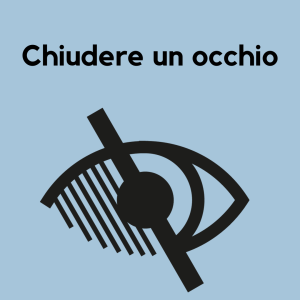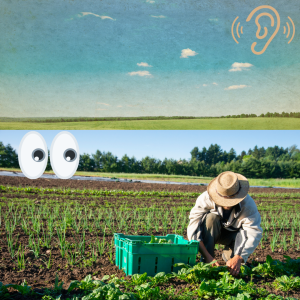In the intricate tapestry of language and culture, idioms often serve as colorful threads that weave through everyday conversations. These expressions encapsulate unique perspectives, reflecting the quirks and nuances of societies around the world. One fascinating realm of idiomatic expressions centers around the organ we hold most dear to our senses – the eye. From seeing the world through “tomatoes on your eyes” to viewing life with “long eyes,” idioms related to vision provide a glimpse into how different languages illuminate the human experience. Let’s embark on a linguistic journey and explore idioms from various corners of the globe, with a touch of English for good measure.
Now, here are the paraphrased explanations of the idioms:
Kuman di seberang lautan tampak, gajah di pelupuk mata tak tampak (Indonesian):
-
- This Indonesian idiom literally means that we can see a germ across the sea but not an elephant on the eyelid. It means that we often notice the small mistakes of others while remaining blind to our own, even when they’re significant.
- In Indonesia, this idiom suggests the human tendency to see others’ flaws but overlook our own, even when they’re glaring.

長い目で見る (Nagai me de miru) (Japanese):
-
- ‘Nagai’ (長い) means “long/long-term,” ‘me’ (目), like the Chinese character, means “eye/view,” and ‘miru’ (見る) means “to look at.” The literal meaning of ‘nagai me de miru’ is “to look at something with long-term view.”
- With “nagai me de miru,” the Japanese encourage taking a long-term view, making decisions based on the future rather than the present. This Japanese idiom emphasizes making judgments and decisions with an eye on long-term outcomes rather than short-term gains.

Chiudere un occhio (Italian):
-
- “Chiudere” means close while “un occhio” means an eye. When someone “chiude un occhio,” it implies they are turning a blind eye to another person’s fault, often with a connotation of leniency.
- In Italy, this idiom signifies the act of overlooking or ignoring someone’s mistakes or faults.

Очки втирать (Očki vtiratʼ) (Russian):
-
- The literal meaning of “очки втирать” is to smear eyeglasses, but figuratively, it refers to pulling the wool over someone’s eyes, often through deception.
- In Russia, this idiom suggests attempting to deceive or mislead someone, akin to pretending to clean eyeglasses.
เอาหูไปนา เอาตาไปไร่ (Thai):
-
- “เอาหูไปนา เอาตาไปไร่,” literally means “take ears to the field, take eyes to the farm.” This idiom advises against paying too much attention or being overly cautious.
- In Thailand, it’s a playful way of saying, “Don’t bring your eyes and ears with you; don’t be overly vigilant.”

ไก่เห็นตีนงู งูเห็นนมไก่ (Thai):
-
- “ไก่เห็นตีนงู งูเห็นนมไก่,” translates to “the hen sees the snake’s feet, and the snake sees the hen’s boobs.” It signifies two people knowing each other’s secrets.
- In Thailand, this idiom is used to describe a situation where two people are privy to each other’s hidden knowledge or secrets
Tomaten auf den Augen haben (German):
-
- This German idiom, “Tomaten auf den Augen haben,” humorously suggests that someone is so oblivious to their surroundings that it’s as if they have tomatoes covering their eyes. It refers to a lack of awareness, akin to not noticing the woman in front of you or even a cheating partner.
- Explanation: In Germany, if you’re told you have “tomatoes on your eyes,” it’s a playful way of saying you’re not paying attention to what’s happening around you.

With Eyes Wide Open (English)
- To have “eyes wide open” means to be fully aware of what could happen.
- “Before you accept the offer of a million dollars, make sure you go into this situation with your eyes wide open. It could be a scam.
If we can see this world through the eyes of others, our lives will grows richer and more colourful. We can then come to the end of ourselves and begin to take the log out of our eyes and cease to be selfish. By delving into these idioms from other parts of the world, we unveil the rich tapestry of linguistic expression and celebrates the unique perspectives and shared experiences of cultures worldwide.










